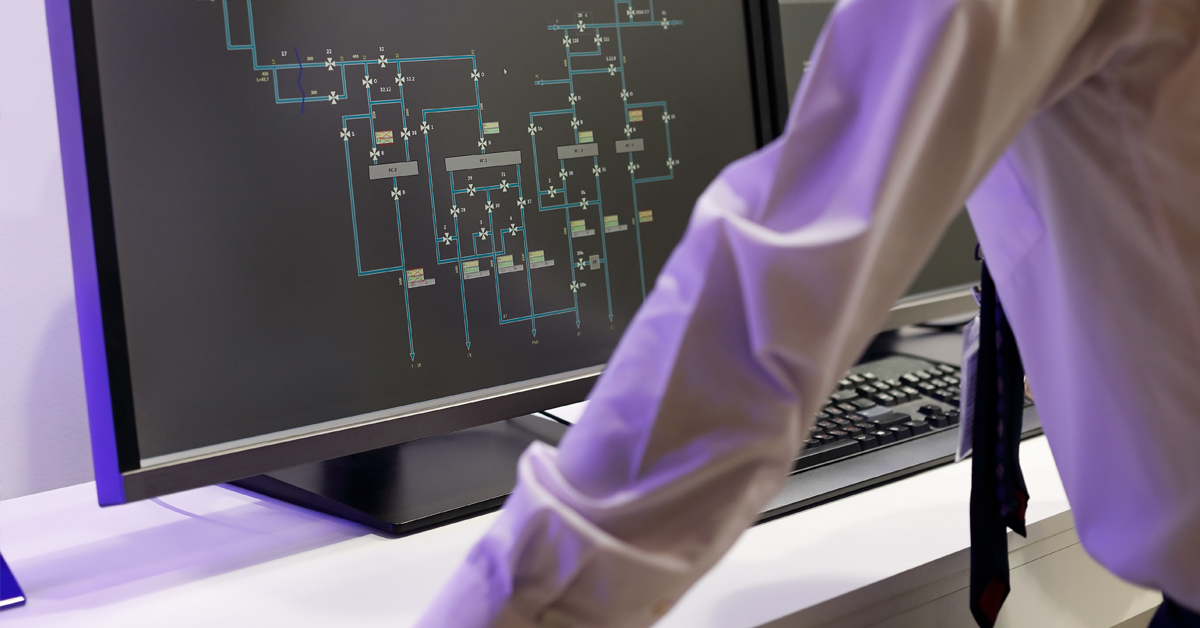As of 2020, almost 38 per cent of Europe’s power comes from renewable sources such as wind, hydroelectric, biomass and solar power. Operating and monitoring a substation is no easy task, especially as the global energy mix continues to diversify to meet climate goals and the range of different power sources continues to grow. Substation operators face new challenges in increased energy demand, variability in energy sources and a greater number of inputs, and as such stricter monitoring is required. A part of this is load flow analysis — a numerical analysis of power flow in interconnected systems. Load flow data offers key insights in real time into the state of the grid which can support expansion and decision making.
The key to to detect and read flow data
The expansion of more diverse and volatile energy sources makes grid management more complex, and less predictable. Substations, and the important and complicated assets they contain, require constant and effective monitoring and power flow analysis to ensure performance and to protect them against this unpredictability. It is key to be able to detect and read flow data to remove power to assets in the event of harmful surges, but not every anomalous measurement indicates a fault. Parametrising protection relays to prevent damage to valuable assets and to also avoid these false positives from unpredictable readings can be a difficult balancing act but achieving it accurately can improve availability.
Prevention of chain reactions
Using load flow calculations is an effective way to overcome these challenges. A load flow calculation takes data measurements from all substation inputs and outputs and calculates the distribution of the active and reactive power, considering electrical parameters such as resistance. It can also give information on non-measured paths and the potential effects of switching actions. This can help to prevent chain reactions in the event of borderline overloads. At the grid level this gives an overview of load distribution across the entire grid and inform on events which may take place or potential changes or disruptions to the network.
At the substation level, this is useful for areas where there is no data measurement available, as it acts as a digital twin storing data on all power flows in the substation. With the significant increase of data transmitted to a central dispatcher supervisory control and data acquisition (SCADA) system due to newer, more varied power sources and monitoring of the low voltage level, the volume of data may be too high to be processed centrally, and thus a decentralized pre calculation of load flow can be beneficial.
Load flow calculator
For accurate and reliable load flow analysis in the changing energy landscape, a Distribution Management Systems (DMS) is essential for optimising substation operations. COPA-DATA’s zenon Energy Edition has been developed to meet the evolving needs of energy providers and comes equipped with DMS features. It has a load flow calculator (LFC) which receives measured values from intelligent electronic devices (IEDs) within the substation and calculates power distribution. The LFC then provides data on predefined points in the grid where no measurement is available, and this data can then be transferred to the dispatch SCADA if necessary. The additional information collected by the system allows the substation manager to incorporate machine-based suggestions into substation processes. The LFC is hardware independent and easy to integrate into substation and grid operations and compatible with all existing energy equipment, making it an ideal solution for any energy provider.
The data obtained from the LFC can help operators and engineers to run a safer and more efficient grid, as it can predict potential overload conditions which can then be addressed. It also allows better visualisation of the entire grid or substation, as non-measured lines which would normally be ‘blind spots’ can be set as measuring points, giving an operator improved situational awareness. Using a decentralized LFC also reduces the work load of the centralized dispatch SCADA and improves overall efficiency.
With ambitious climate goals in place globally, the energy mix will only continue to diversify. Managing grid and substation operations in an increasingly complex energy landscape with varied sources is a challenge, but choosing the right software solutions can ensure that energy providers future-proof their operation.
To learn more click here

